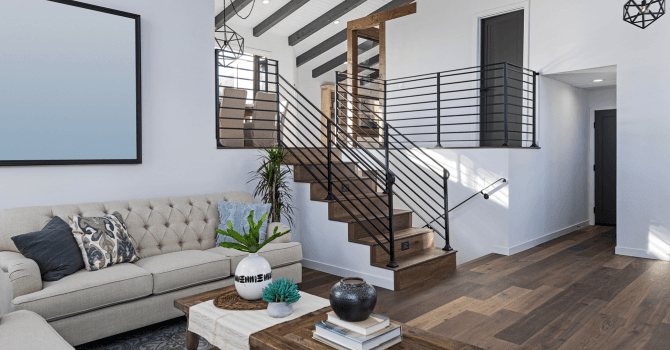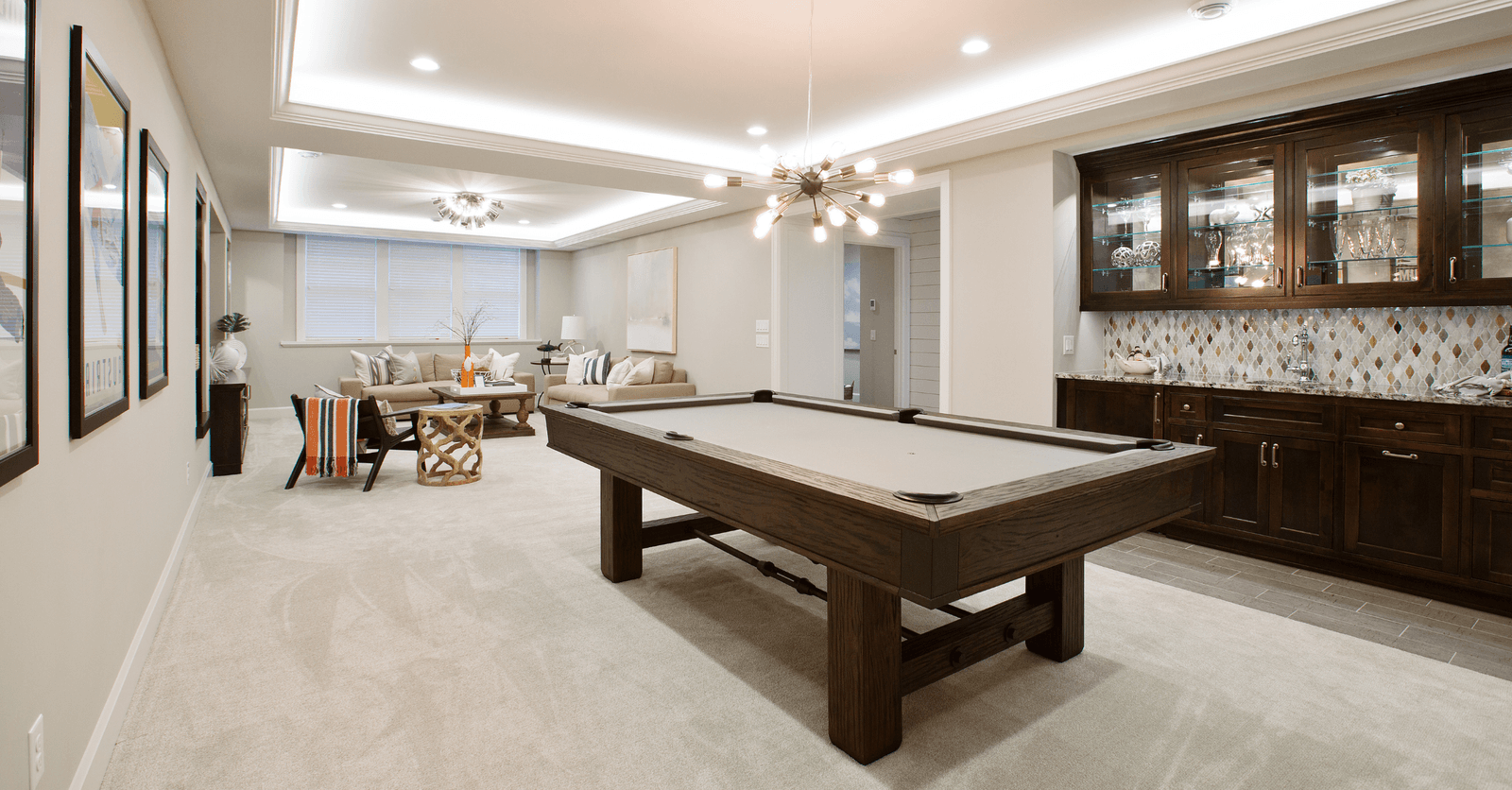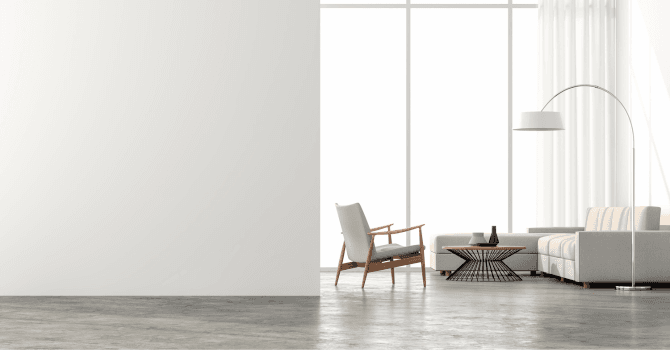
The banister, though it is often overlooked, is an integral part of our daily lives. What's more, we tend to forget how important the chosen model actually is, which tends to be dependent on the material it is made out of.
Likewise, choosing a banister will have both an aesthetic and a functional impact. So, to properly educate you on this subject, here’s a brief overview of the different types of banisters.
Quick Note
When referring to banisters, we mean both the railing and the handrail. The railing is the part that prevents one from falling into the void, and the handrail is the part which one holds or rests their hand on. However, the handrail can be installed without necessarily needing a railing.
Even though there are various types of banisters on the market, the chosen one has to meet certain standards during the staircase design process. The banister will also be considered and integrated into the architectural plans. In fact, depending on the type of project (residential, commercial, or institutional), its design can become rather complex.
6 Models of Banisters
Choosing a wooden banister

Source : Source
With wood being such a common feature in most homes, it's easy to see why banisters made out of this time-honoured material remain so popular. While being the best value for money, wood railings also have the added benefit of being easily integrated into any decor, making them a very versatile option.
Note that installing a wooden banister is relatively easy to do. If you prefer to leave this project in the capable hands of a professional, be prepared to pay $40 per linear foot or $45 per linear foot for a banister with metal balusters. To preserve the condition of your banister, we strongly recommend applying a nourishing oil to the wood. You may also want to paint or stain the wood to ensure its longevity.
Why choose an aluminum banister?

Source : Source
Aluminum banisters are usually low-maintenance and ship pre-assembled, thereby simplifying the installation process. Whether installed indoors or outdoors, an aluminum banister is often paired with glass guardrails to add a modern flair to the decor. Unfortunately, it's fair to say that aluminum is difficult to polish, which makes restoring this material more of a chore.
Moreover, note that aluminum staircases usually have exposed joints, which isn't necessarily everyone's cup of tea. If it's an option you're considering, note that installing this type of banister costs between $40 and $64 per linear foot, depending on the complexity of the project.
Glass banister

Source : Source
If you’re on the daring side and like to push things over the edge, give your banister a unique and aesthetic look, and install glazing instead of railings. However, doing so requires regular maintenance so as to keep the glass fingerprint-free and dust-free, as these will be hard to ignore. Moreso, if you opt for a glass staircase banister for your outdoor terrasse, note that privacy won’t be an added benefit.
Besides, since handling the glazing is rather laborious, it’s best to hire a skilled professional to install the banister. Does this modern-looking, sleek concept suit your needs? Note that costs vary between $75 and $100 per linear foot.
PVC railing

Source : Source
Quite durable, PVC banisters are often chosen because they're cost-effective and relatively easy to install, thus eliminating the need for a professional. Also, note that PVC banisters can either be installed indoors or outdoors, and require minimal maintenance.
Bear in mind that most PVC banisters are UV treated to prevent yellowing over time. Also, a PVC banister will never rust, which is a considerable bonus.
Are you thinking about installing a PVC banister? Check out our article to know how to go about it! (French only)
Cable railing for a modern twist

Source : Source
Although it’s not an option that’ll jump right out at you, a cable railing staircase makes for an ideal choice if you seek modern decor. Also, let it be known that this type of banister can be installed both inside and outside, and the cables can be fitted horizontally and vertically. Bear in mind that the cable in question must be made of either stainless or galvanized steel so it remains rust-free if it’s to be installed outside.
Wrought iron balusters: as refined as can be

Source : Source
Notorious for its distinguished elegance, wrought iron steals the show from the previously mentioned options due to its sturdiness, which is synonymous with great durability. Even though this material appears to represent the best of both worlds on account of its charm and sturdiness, bear in mind that wrought iron tends to rust if not painted. For those who would be interested in a compelling alternative, note that you can easily opt for wrought aluminum, which has the added benefit of being rustproof.
Want to know more about the ways to maintain wrought iron? Check out our article: How to Fix Your Wrought Iron Staircase.
Building Standards for Railings

Source : Source
A handrail must be installed at a minimum of three risers on one side. If the width of the staircase is 1,092 mm (43 in) or more, a handrail must be installed on either side of the staircase. For a multi-level staircase, the handrail must be continuous and extend 305 mm (12 in) before the start of the first step, and also after the last step on the landing.
A handrail
It must be between 815 and 965 mm (32 and 38 in) from the landing and 51 mm (2 in) from the wall. It must be solidly anchored and the edges must be conceived to ensure the safety of the users.
As for the guardrail, it is mandatory when the staircase isn’t enclosed and when its width exceeds 1,092 mm (43 in). The former must be at least 915 mm (36 in) high, from the landing to the top of the stairs.
For balconies, stoops and terraces, if they’re located above ground level, meaning between 610 mm to 1,805 mm (24 and 71 in), the guardrail must be 1,092 mm (43 in) high. Should the balconies, stoops and terraces be higher than 1,805 mm (71 in) above ground level, the guardrail should be at least 1,067 mm (42 in) high.
The spacing between balusters
It shouldn’t exceed 4 inches, so that a child won’t be able to squeeze their head through the railings. Furthermore, if the railings are replaced by a pattern, the railing shouldn’t be climbable to avoid children getting on the structure and hurting themselves. Check the established standards within your borough in regard to banisters. Also, keep in mind that matters of safety should not be forsaken for aesthetics.
Sotheary Chan
Updated French article by Karine Dutemple
Get 3 renovation quotes for your banister project
RenoQuotes.com can help you get quotes for your banister renovation project. By submitting your project, we’ll put you in contact with top-rated contractors. Fill in the form on the homepage (it only takes a few minutes), and you will get estimates from trusted professionals.
Dial 1-844 828-1588 to speak with one of our customer service representatives.
Looking for something else?
Related articles
The latest industry news, interviews, technologies, and resources.

Editorial Team
•07 Nov 2023
Moving into the first month of the year, we’re looking at our interiors with a new and critical eye. As a result of the pandemic, many have had to restructure their lives to comply with restrictions, and are thus spending a significant amount of time in their interior spaces.

Cynthia Pigeon
•17 May 2024
Are you planning on renovating or building a basement, and have some questions about ceiling heights? Keep reading to get just the information you are looking for!

Editorial Team
•23 Jul 2025
Whether you’re looking to create a modern or industrial look, the versatility of waxed concrete will surprise you every time. It's the number-one option whenever you want to add a distinctive touch to your new décor. However, before using this coating as part of your revamped space, learn more about it.
Editorial Team
•05 Sep 2024
Cracked grout, recessed joints, and loose tiles are some of the telltale signs of a leak, but when grout joints darken as a result of mould, and the tiles sink to the touch, it’s about time to act.

Cynthia Pigeon
•07 Nov 2023
Flooring options must adhere to the environment in which they are installed. Since wood typically has a low moisture threshold, wood and moisture are a notoriously bad fit. That being said, there are hardwood flooring options, as well as finishes, that are suitable for even the most humid of areas.